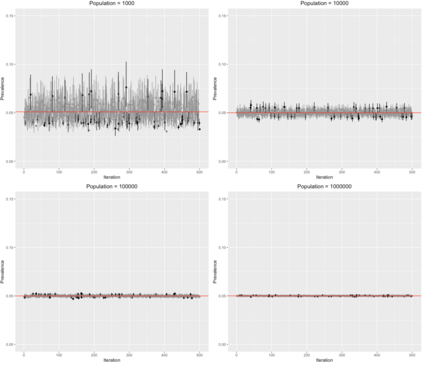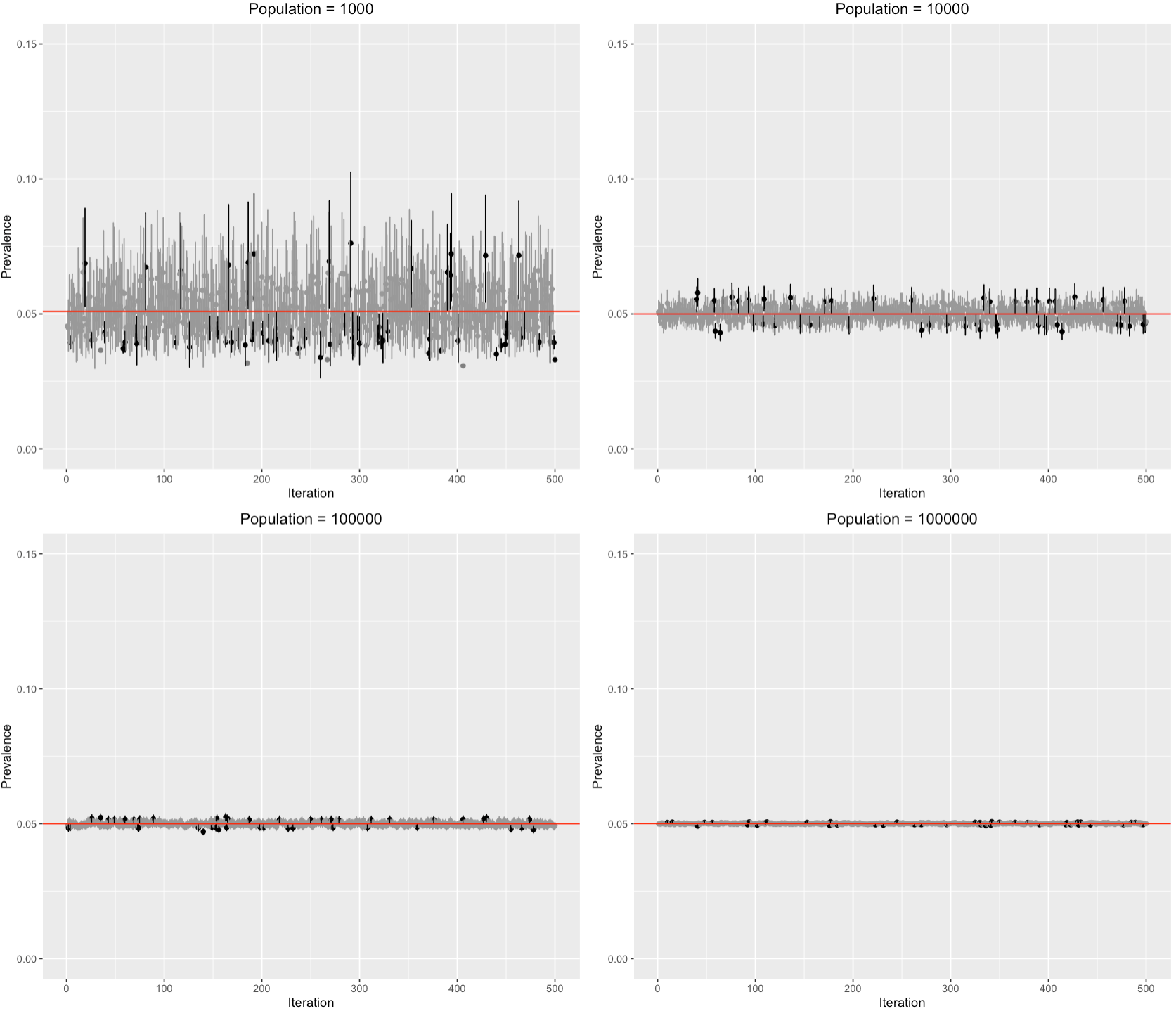The topic of this paper is prevalence estimation from the perspective of active information. Prevalence among tested individuals has an upward bias under the assumption that individuals' willingness to be tested for the disease increases with the strength of their symptoms. Active information due to testing bias quantifies the degree at which the willingness to be tested correlates with infection status. Interpreting incomplete testing as a missing data problem, the missingness mechanism impacts the degree at which the bias of the original prevalence estimate can be removed. The reduction in prevalence, when testing bias is adjusted for, translates into an active information due to bias correction, with opposite sign to active information due to testing bias. Prevalence and active information estimates are asymptotically normal, a behavior also illustrated through simulations.
翻译:本文件的主题是从积极信息的角度对流行程度进行估计; 接受测试的个人的流行率有一个向上偏向,其假设是,个人接受疾病测试的意愿随其症状的强度增加而增加; 测试偏向所产生的积极信息量化了接受测试的意愿与感染状况相关的程度; 将不完整的测试解释为缺失的数据问题,缺失机制影响原始流行估计的偏向可以消除的程度; 测试偏向调整后,流行程度的下降转化为积极信息,其原因是纠正偏向,与积极信息相反,原因是测试偏向。 普遍程度和积极信息估计是正常的,一种行为也通过模拟来说明。






